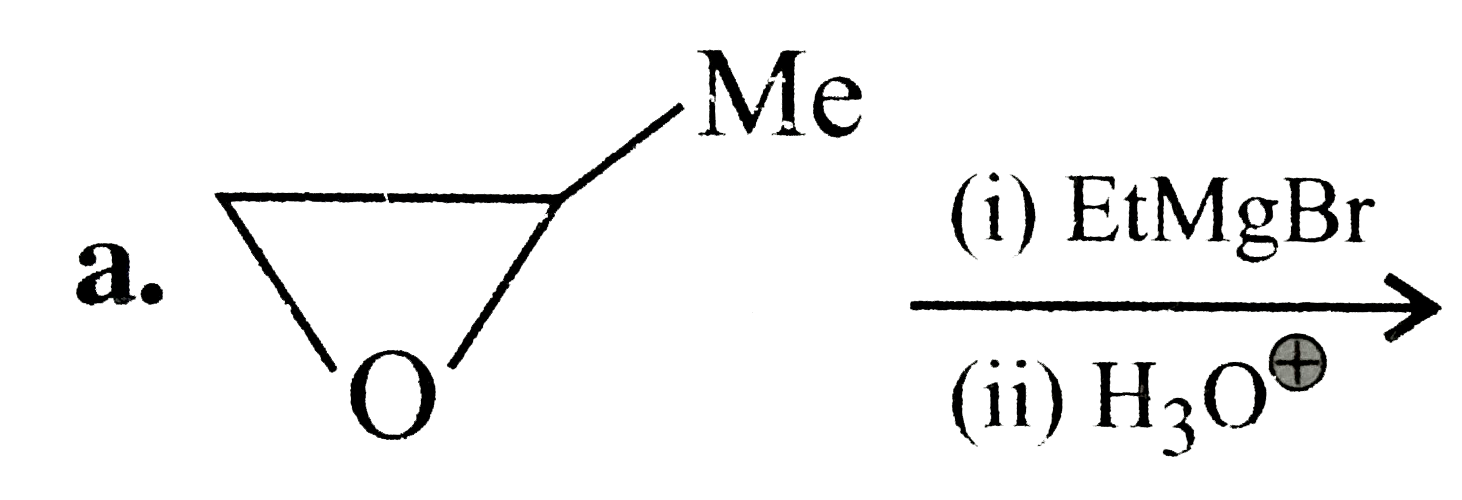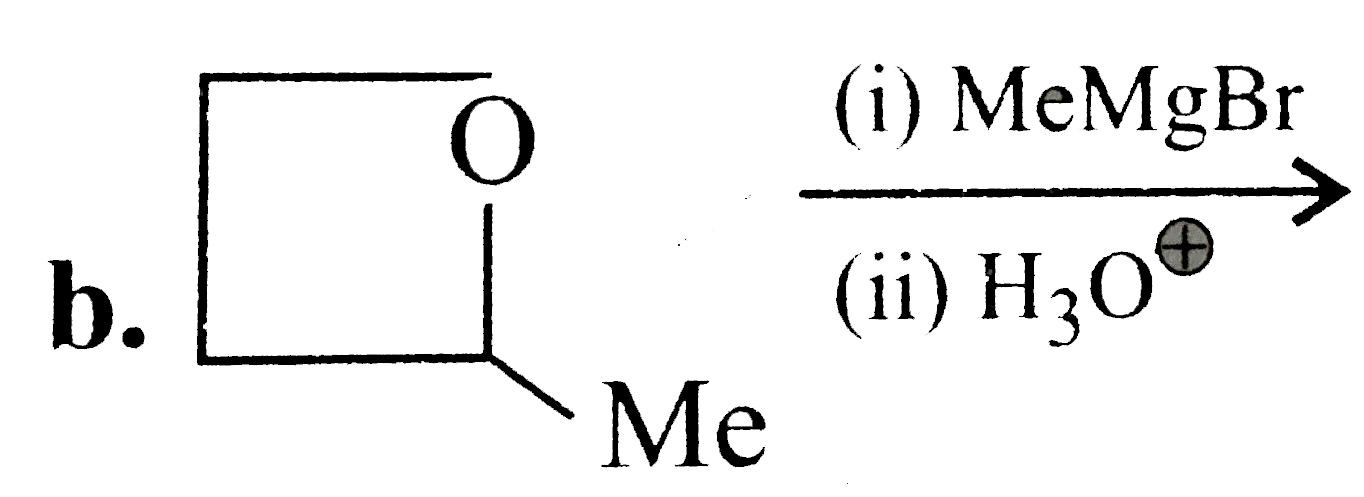The pair of reactants for a Grignard reaction that does not give 2-phenylbutan-2-ol after an aqueous workup is




To solve the question regarding the Grignard reaction that does not yield 2-phenylbutan-2-ol after an aqueous workup, we need to analyze the reactants involved in the Grignard reaction and their expected products.
1. Understanding Grignard Reagents:
Grignard reagents are organomagnesium compounds represented as RMgX, where R is an organic group (alkyl or aryl) and X is a halogen. They react with carbonyl compounds to form alcohols after hydrolysis.
2. Identifying the Target Product:
The target product is 2-phenylbutan-2-ol. This compound can be formed from a reaction involving a ketone or an aldehyde with a Grignard reagent.
3. Analyzing Possible Reactants:
- Reactant Pair 1: CH3C(=O)CH2CH3 (a ketone) with C6H5MgBr (phenyl Grignard reagent).
- Reactant Pair 2: CH3C(=O)CH3 (another ketone) with C6H5MgBr.
- Reactant Pair 3: CH3C(=O)CH2CH3 (a ketone) with CH3MgBr (methyl Grignard reagent).
- Reactant Pair 4: An ester like CH3COOCH2CH3 with CH3MgBr.
4. Predicting the Products:
- For Reactant Pair 1: The reaction would yield 2-phenylbutan-2-ol after hydrolysis.
- For Reactant Pair 2: This would also yield 2-phenylbutan-2-ol.
- For Reactant Pair 3: This would yield 2-phenylbutan-2-ol as well.
- For Reactant Pair 4: The reaction of an ester with a Grignard reagent typically yields a tertiary alcohol. In this case, it would yield 2-phenylpropane-2-ol instead of 2-phenylbutan-2-ol.
5. Conclusion:
The pair of reactants that does not give 2-phenylbutan-2-ol after an aqueous workup is the one involving an ester (like CH3COOCH2CH3) with CH3MgBr. This results in the formation of 2-phenylpropane-2-ol instead.
Final Answer:
The pair of reactants for a Grignard reaction that does not give 2-phenylbutan-2-ol after an aqueous workup is an ester (like CH3COOCH2CH3) with CH3MgBr.
Grignard reagents are organomagnesium compounds represented as RMgX, where R is an organic group (alkyl or aryl) and X is a halogen. They react with carbonyl compounds to form alcohols after hydrolysis.
The target product is 2-phenylbutan-2-ol. This compound can be formed from a reaction involving a ketone or an aldehyde with a Grignard reagent.
- Reactant Pair 1: CH3C(=O)CH2CH3 (a ketone) with C6H5MgBr (phenyl Grignard reagent).
- Reactant Pair 2: CH3C(=O)CH3 (another ketone) with C6H5MgBr.
- Reactant Pair 3: CH3C(=O)CH2CH3 (a ketone) with CH3MgBr (methyl Grignard reagent).
- Reactant Pair 4: An ester like CH3COOCH2CH3 with CH3MgBr.
- For Reactant Pair 1: The reaction would yield 2-phenylbutan-2-ol after hydrolysis.
- For Reactant Pair 2: This would also yield 2-phenylbutan-2-ol.
- For Reactant Pair 3: This would yield 2-phenylbutan-2-ol as well.
- For Reactant Pair 4: The reaction of an ester with a Grignard reagent typically yields a tertiary alcohol. In this case, it would yield 2-phenylpropane-2-ol instead of 2-phenylbutan-2-ol.
The pair of reactants that does not give 2-phenylbutan-2-ol after an aqueous workup is the one involving an ester (like CH3COOCH2CH3) with CH3MgBr. This results in the formation of 2-phenylpropane-2-ol instead.
The pair of reactants for a Grignard reaction that does not give 2-phenylbutan-2-ol after an aqueous workup is an ester (like CH3COOCH2CH3) with CH3MgBr.
Topper's Solved these Questions
Similar Questions
Acetophenone to 2-phenylbutan-2-ol
View SolutionA compound (A) reacts with thionylchloride to give a compound (B). (B) reacts with magnesium to form a Grignard reagent which is treated with acetone and the product is hydrolysed to give 2-methyl butan-2-ol. What are the structural formulae of (A) and (B) ?
View Solution
Knowledge Check
Dehydration of 3-phenyl butan-2-ol gives
A2-phenyl but-2-eneB4-phenyl 2-methyl but-I-eneC1-phenyl 3-methyl but-1-eneD3-phenyl but-1-eneWhich of the following reactions does not give RCONH2?
AR−C≡N+H2OHCl−−→BRCONH4heat−−→CRCNH2/Ni−−−→D(RCO)2O+NH3−−→Which of the following reactions would give pentan−2−ol ?
A B
B C
C DMeCHOPrmgBr/ether−−−−−−−−→H3O⊕
DMeCHOPrmgBr/ether−−−−−−−−→H3O⊕
The reaction of a Grignard reagent with a carboxylic acid does not give a secondary alcohol. This is because
View SolutionReaction of esters with Grignard reagents give rise to :
View SolutionReaction between Grignard's reagent and cyanogen chloride gives :
View SolutionPropyne on reaction with aqueous chlorine gives-
View SolutionWhat would be the reactant and reagent used to obtain 2,4 - dimethylpentan-3-ol ?
View Solution
